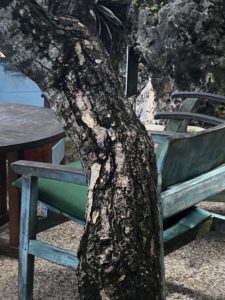A quick reminder of the Stress-transformation coaching offer details below, and the Stress transformation workshop this Saturday…In the spirit of unhooking,Toby
Special offer on Stress-Transformation coaching
Stress transformation coaching with Toby helps you to transform your present overwhelm, stress, anxiety and other difficult emotions into forces for the good in your life. The coaching focuses upon thriving in situations and circumstances that would previously make you unhappy, fearful, inhibited and so on…See full details here.
Get 15% off the usual cost, offer ends on Tuesday 16th April
Unhooking your mind
A few days ago, I was feeling over-tired, over-stretched and over-whelmed. When I’m in this state I know that its very easy for challenging thoughts and emotions in my mind to become a lot more dramatic/catastrophic than my life is, in reality.
I knew from past experience that, in this situation, what I need to do is just stop for a while and gather myself.
So, I sat down to do a bit of meditation. As I began to calm down and breathe, I saw an image of myself underwater, with many little fishhooks in me. I was struggling around, and this was causing the hooks to tear my flesh even more. I saw myself in the image stop struggling, becoming still and relaxing. As I relaxed, I could feel the pain in my mind becoming less, and I could see the hooks stop tearing at my flesh in the image. I started to feel comfortable, gradually I could see the hooks in my body gradually dissolving away, and my flesh healing. As the image changed I could feel the energy in my body, mind and heart calming and regenerating. I became comfortable.
By the time I had finished sitting, I felt centred and recharged. My challenges had not gone away, but they felt different. I felt stronger, and able to take courage and continue moving toward the best that my life has to offer, and to continue to express myself according the values that mean the most to me.
This is a simple imaginative technique that you can use yourself anytime to ‘mindfully unhook’ yourself from the repeating thoughts and feelings that are tearing you up, and return your body, mind and heart to health and balance.
Related articles: When you are trapped in a thornbush
Big Enough, Specific Enough (Dealing with spiky minds)
Article © Toby Ouvry 2019, you are welcome to use or share this article, but please cite Toby as the source and include reference to his website www.tobyouvry.com
All Courses at Integral Meditation Asia
Ongoing on Wednesday’s, 7.30-8.30pm – Wednesday Meditation Classes at Basic Essence with Toby
Ongoing on Tuesday evenings, 7.30-8.30pm – Tuesday Meditation Classes at One Heart with Toby (East coast)
Monday 6.15-7.15 & Wednesday 12.15-1.15 – Integral Meditation classes at Space2B on Stanley Street
Saturday mornings 9-10.15am, April 20th & 27th – Qi Gong workout and meditation class
Tues & Weds 2nd/3rd April – Monthly astrological meditation – Aries – I Am: Developing confidence in yourself and your identity in the world
Saturday 13th April 9.30am-12.30pm – Meditations for transforming negativity and stress into positivity and enlightenment
FOR BEGINNERS: Saturday 27th April, 11-12.30pm – Get your meditation practice started now- The shortest and most time effective meditation workshop ever
Integral Meditation Asia
Online Courses * 1:1 Coaching * Books * Live Workshops * Corporate Mindfulness Training *Life-Coaching * Meditation Technology










